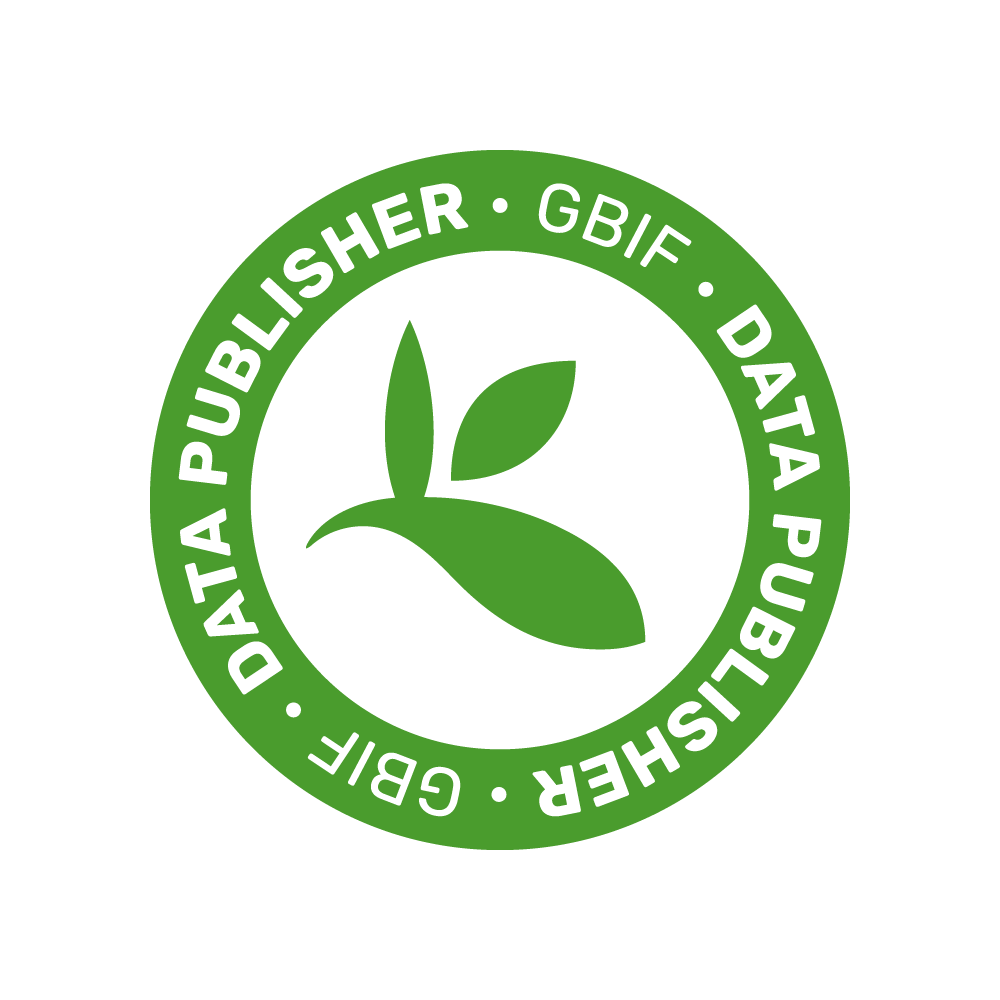Score: 11.32
#806 - Management of genetic resources of the multi-purpose tree species Castanea sativa Mill
Eriksson G, Pliura A, Fernández-López J, Zas R, Blanco Silva R, Villani F, Bucci G, Casasoli M, Cherubini M, Lauteri M, Mattioni C, Monteverdi C, Sansotta A, Garrod G, Mavrogiannis M, Scarpa R, Spalato F, Aravanoupoulos P, Alizoti E, Drouzas A
Kind: pub - Date: Jan 19, 2015
Score: 9.85
#2747 - Management of genetic resources of the multi-purpose tree species Castanea sativa Mill.
Eriksson G, Pliura A, Fernandez-Lopez J, Zas R, Silva RB, Villani F, Bucci G, Casasoli M, Cherubini M, Lauteri M, Mattioni C, Monteverdi C, Sansotta A, Garrod G, Mavrogiannis M, Scarpa R, Spalato F, Aravanoupoulos P, Alizoti E, Drouzas A, Robin C, Barreneche T, Kremer A, Rornane F, Grandjanny M, Grossman A, Botta R, Marinoni D, Akkak A, Diamandis S, Perlerou H, Vannini A, Vettraino AM, Russell K, Buck, E
Kind: pub - Date: Nov 20, 2019
Score: 3.11
#296 - PRO-GRACE - Promoting a Plant Genetic Resource Community for Europe
Plants are the basis of all food, feed and renewable bioenergy production and are essential for the transition from a fossil-based to a bio-based economy. Plant Genetic Resources (PGR) play a key role in ensuring this transition, as well as food security and climate mitigation. More than 2 million plant accessions are preserved “ex situ” in 410 institutes in Europe and associated countries and listed in the EURISCO database; even more diversity is found “in situ” in European farmlands and wild habitats, where it contributes significantly to agricultural resilience and climate mitigation. Detailed information on “ex situ” accessions is, at best, fragmentary, while for “in situ” accessions it is almost non-existent. A considerable part of these resources could be lost over the coming decade due to limitations in the “ex-situ” infrastructure and management, climate change, habitat loss, and invasive/alien species. The roadmap 2016 of the European Strategy Forum on Research Infrastructures (ESFRI) identifies a clear gap in the sector “Plant facilities - unlocking green power”, i.e. the lack of a European Research Infrastructure (RI) specifically dedicated to PGRs. PRO-GRACE will undertake the first step to fill this this gap, by developing the concept of a novel research Infrastruture (RI) dedicated to the conservation and study of PGRs. The concept will describe the proposed distributed structure, governance, economic plan and scientific services of the proposed RI, and will be the basis for a full proposal at the next ESFRI call. If implemented, this new RI will aim to catalogue, describe, preserve and enhance European plant agrobiodiversity, and translate the results into conservation practices and agricultural innovation, and will collaborate with global organizations dedicated to Plant Genetic Resources and with other established ESFRI RIs working on complementary fields (e.g., ELIXIR, EMPHASYS, DISSCO, LIFEWATCH, MIRRI).
Kind: project - Date: Jan 01, 2023
Score: 2.59
#302 - OptFORESTS - Harnessing forest genetic resources for increasing options in the face of environmental and societal challenges
Forests are key elements of the European bioeconomy. To enhance provision of their ecosystem services (ES), harnessing Forest Genetic Resources (FGR) is essential. OptFORESTS will support the conservation and sustainable use of FGR by: i) conducting research on the selection of diverse forest reproductive material (FRM), including mixtures, adapted to future climates, ii) fostering sustainable use and resilience of natural forests, iii) helping expand and diversify nursery production, iv) developing nature-based solutions (NBS), tools (e.g., expanded Information Systems) and cultural trajectories to promote forest biodiversity and ES, and v) demonstrating biodiversity restoration solutions. To do this, OptFORESTS will carry out genetics, modelling, stakeholder surveys, expert panels and socioeconomic analyses. OptFORESTS will evaluate adaptive and biomass traits in existing common gardens and newly-established next-generation ones, conserve and utilise unique tree lineages for ecosystem restoration and management, model future adaptation of trees at different life stages and conduct low-input breeding. This will be complemented by studying the effects of silviculture and landscape heterogeneity on genetic diversity and developing new silvicultural options for genetically mixed forests, which will be implemented via training software (marteloscopes) and long-term demonstration plots. To enable optimal supply of diversified FRM, OptFORESTS will assess the European nursery sector, forecast future FRM needs, develop plant production technology and promote cooperation between nurseries. To ensure the uptake of NBS, they will be co-designed with local and EU-level stakeholders and a cost-benefit and gap analysis of key socio-economic, governance and policy issues will be developed. Finally, the OptFORESTS tailored communication strategy will be instrumental in achieving long-term impacts supporting international and EU policy under the European Green Deal.
Kind: project - Date: Nov 01, 2022
Score: 2.30
#1509 - Evolution-based approach needed for the conservation and silviculture of peripheral forest tree populations
Fady B, Aravanopoulos FA, Alizoti P, Mátyás C, von Wühlisch G, Westergren M, Belletti P, Cvjetkovic B, Ducci F, Huber G, Kelleher CT, Khaldi A, Kharrat MB, Kraigher H, Kramer K, Mühlethaler U, Peric S, Perry A, Rousi M, Sbay H, Stojnic S, Tijardovic M, Tsvetkov I, Varela MC, Vendramin GG, Zlatanov T
Kind: pub - Date: Aug 01, 2016
Score: 2.19
#19 - Landscape genomics approaches for an adaptive silviculture applied to beech stand
Genetic variation is crucial for the fitness and survival of individuals and the ability of species to adapt to environmental change. Within each population, genetic changes, plasticity and evolvability result from the combination of random and selectively oriented processes. Silviculture displays a direct impact on the evolution drivers by acting on environmental conditions: competition dynamics and other abiotic and biotic factors. Some types of silvicultural management can lead to selections that influence the spatial grouping of reproductive individuals and therefore the gene flow level. Forest practice should simultaneously accelerate genetic adaptation by promoting the response of forest populations to known environmental changes and preserve genetic diversity as a reservoir of future options for responding to unknown changes. In this context, landscape genomics, a research approach that combines population genetics, landscape ecology, and spatial analytical techniques, has emerged as a flexible analytical framework for understanding the interactions between environmental heterogeneity and adaptive genetic variation. The main goal of this project is to use Landscape genomics approach to evaluate the effects of silvicultural treatments on forest genetic resources (FGR) in Fagus sylvatica L. (Fs) forests through an adaptive approach. This approach will permit to determine if the silvicultural treatment applied is able to maintain or increase the genetic variability of Fagus sylvatica stands. Therefore, beech stands subjected to different silvicultural regimes will be analysed in order to assess the genetic structure and correlate it to environmental variables, and to develop adaptive silviculture strategies. The landscape genomics approaches that will be used involve the analysis of different types of data in order to define, through the use of spatial analytical techniques, any statistical correlations, so as to test the landscape-genetic relationships explicitly and quantitatively. The analyses conducted in this project will allow us to precisely investigate how environmental characteristics influence the micro-evolutionary processes of gene flow and drift, and consequently the spatial genetic structure of forest stands. Specifically, the analyses will allow us to identify many allelic variants associated with adaptation to environmental stresses; obtain correlation of adaptive diversity data with environmental variables; and provide data on the status and trends in adaptive capacity of forest stands. This information will be used to guide future silvicultural interventions toward maintaining and, if possible, increasing genetic variability
Kind: webinars - Date: Dec 15, 2021
Score: 2.13
#3180 - The GenTree Leaf Collection: inter and intraspecific leaf variation in seven forest tree species in Europe
Benavides R, Carvalho B, Bastias CC, López-Quiroga D, Mas A, Cavers S, Gray A, Albet A, Alía R, Ambrosio O, Aravanopoulos F, Auñón F, Avanzi C, Avramidou EV, Bagnoli F, Ballesteros E, Barbas E, Bastien C, Bernier F, Bignalet H, Bouic D, Brunetto W, Buchovska J, Cabanillas-Saldaña AM, Cheval N, Climent JM, Correard M, Cremer E, Danusevičius D, Dauphin B, Del Caño F, Denou J, Dokhelar B, Dourthe R, Farsakoglou A, Fera A, Fonti P, Ganopoulos I, García del Barrio JM, Gilg O, González-Martínez SC, Graf R, Grivet D, Gugerli F, Hartleitner C, Heer K, Hollenbach E, Hurel A, Issehuth B, Jean F, Jorge V, Jouineau A, Kappner J, Kärkkäinen K, Kesälahti R, Knutzen F, Kujala ST, Kumpula T, Labriola M, Lalanne C, Lambertz J, Lascoux M, Le Provost G, Liesebach M, Malliarou E, Marchon J, Mariotte N, Martínez-Sancho E, Matesanz S, Meischner H, Michotey C, Milesi P, Morganti S, Myking T, Nilsen AE, Notivol E, Opgenoorth L, Østreng G, Pakull B, Piotti A, Plomion C, Poinot N, Pringarbe M, Puzos L, Pyhäjärvi T, Raffin A, Ramírez-Valiente JA, Rellstab C, Richter S, Robledo-Arnuncio JJ, San Segundo S, Savolainen O, Schneck V, Schueler S, Scotti I, Semerikov V, Henrik Sønstebø J, Spanu I, Thevenet J, Tollefsrud MM, Turion N, Vendramin GG, Villar M, Westin J, Fady B, Valladares F
Kind: pub - Date: Jan 17, 2021
Score: 2.03
#319 - PanBiOak - A pan-genomic approach to study local adaptation in Mediterranean oak forests
Forests cover 37% of Italy providing a multitude of benefits and ecosystem services for the country. However, the ongoing climate change (CC) is expected to determine profound impacts on forest structure and function. Increasing rates of forest decline and tree mortality have already been reported in the Mediterranean basin and several oak species display widespread decline and mortality phenomena in Italy. Thus, to predict the fate of the Mediterranean forests and to inform future conservation strategies, we need an in-depth understanding of the key genetic mechanisms involved in the response to environmental variables affected by CC. As of today, studies aimed at elucidating the genetic bases of complex phenotypes in plants focused mostly on identifying genetic association between a given phenotype and single-nucleotide polymorphisms (SNPs). However, recent studies showed that, in addition to SNPs, other types of genomic variation, named structural variation (SV), play an important role in plant genome evolution. Thus, to capture the genetic diversity within a species, it became evident that the genome of a single individual is insufficient to represent the gene diversity within a whole species prompting research to extend the pan-genome concept to plants. The pan-genome represents the entire set of genes within a species and it is composed of a core genome (CG), common to all individuals of the species, and of a dispensable genome (DG), present only in some individuals. PanBiOak will study the geographical distribution of genomic diversity sensu lato, from single nucleotide to structural variation in three widespread, economically important and phylogenetically close oak species: Quercus petraea, Q. pubescens and Q. robur. For each studied species, we will generate a high-quality reference genome and we will resequence several individuals sampled from different populations along steep environmental gradients. This data will allow us to obtain for the first time an accurate and complete overview of the pan-genome of European white oaks, laying the foundations for developing a new strategy to face the adverse effects of climate change on European forests. In fact, our little knowledge of DG has so far limited our ability to harness the full potential of forest genetic resources and optimize the strategies that will shape European forests in the challenging decades ahead. Thus, PanBiOak will unravel for the first time the contribution of SV to local adaptation and evolution in a forest tree species at a biogeographical scale with the aim of identifying possible hotspots of variation which are assumed to underlie the phenotype selected during species evolution and to produce a list of biogeographic-specific markers of local adaptation.
Kind: project - Date: Oct 01, 2023
Score: 1.80
#318 - ResItFor - Improving the RESilience to climate change of ITalian oak FORests facing dieback
Climate change is a well-documented planetary process and we are experiencing its effects, such as temperature increase and changes in frequency and intensity of extreme events. Experiments and observations point to the likelihood that, if climate change proceeds at its current rate, the resilience of many forests will be threatened by altering their structure and function, thus reducing their capability to provide fundamental ecosystem services. For example, within the Mediterranean region, forest vulnerability is rapidly increasing as a consequence of severe water shortage, with several dieback and forest mortality cases reported in Italy over the last two decades. In addition, trees are long-lived and sessile organisms whose migration potential and long-term genetic adaptation are likely too slow to keep pace with current climate change. We still have limited ability to predict climate-related tree mortality mostly because early-warnings are often species-specific and divergent among regions. To better predict the fate of tree species, besides an in-depth understanding on how climate variables affect their growth, we need to comprehend the key genetic and physiological mechanisms involved in adaptive responses. This calls for a thorough evaluation of the link among genotypes, phenotypes and climatic drivers constraining tree growth across species and environments. By collecting an unprecedented amount of phenotypic and genomic information on two emblematic and sensitive species (Quercus robur L. and Quercus frainetto Ten.) across Italy, the ResItFor project aims at revealing the genomic signature of tree adaptation and resistance against individual climate-related decline. ResItFor will focus on natural tree populations where selection strength is likely large enough to discriminate between declining (D) and not-declining (ND) trees in terms of genetic and growth traits. Two-hundreds pairs of nearby D and ND trees will be genetically characterized to get abundant genomic information at ~200,000 SNP loci and in-depth dendrophenotyped by quantitative wood anatomy and isotopic analyses. We will end up with focal populations characterized by unparalleled phenotypic and genotypic information merged at the individual level for trees showing contrasting life-history trajectories. A battery of statistical approaches will eventually reveal the genomic signature underlying both complex phenotypic traits with adaptive value and responses to single events that can push trees from growth decline to death. The results of the project will promote conservation of forest genetic resources providing useful information on species and genotypes particularly adapted/resilient to climatic stressors. The preparation of recommendations and guidelines for stakeholders, policy makers, and managers will help to opt for different forest management options to better cope with future climate change challenges and will represent the conclusive step of ResItFor.
Kind: project - Date: Oct 01, 2023
Score: 1.71
#317 - REACT - Back to the future: REtrospective and prospective insights in silver fir Adaptation to face the ClimaTe crisis
The current climate crisis is a well-documented planetary process and we are already experiencing its effects in terms of warming and altered occurrence of extreme events. All these changes could have deep impacts on forest functioning, thus impairing the benefits and services that forest ecosystems provide to human society. Indeed, trees are long-lived and sessile organisms whose migration potential and long-term genetic adaptation are likely too slow to keep pace with current climate change. The Mediterranean region has been identified as a climate change hotspot. This could increase forest vulnerability leading to broad decline or dieback phenomena as it is more and more globally observed. Yet, we still have limited ability to predict climate-related tree decline and mortality mostly because early-warning signals are often subtle and species-specific. To better predict the fate of a tree species, besides an in-depth understanding on how climate variables affect its growth, we need to know the key genetic and physiological mechanisms involved in its adaptive responses. This calls for a thorough evaluation of the link among genotypes, phenotypes, physiological traits and climatic drivers constraining tree growth across time and environments. By contrasting an unprecedented amount of phenotypic and genomic information on one of the most emblematic and sensitive species across Italy, Abies alba, REACT aims at revealing the phenotypic and genomic signature of tree adaptation and resistance against climate-related stressful conditions. REACT will focus on a thorough sampling of 60 silver fir natural populations, both large and relic, across the Italian peninsula. Here, wéll apply an individual targeted genotyping and in-depth dendrophenotyping by the analysis of wood anatomical traits and non-structural carbohydrate (NSC) content. We will end up with a subset of focal populations characterized by unparalleled phenotypic and genotypic information merged at the individual tree level for populations facing a wide range of climatic stressors. A battery of statistical approaches will finally reveal the genomic signature underlying both complex phenotypic traits with adaptive value and responses to single events that can permit trees to withstand climatic constraints. REACT will answer key scientific questions about the retrospective and future interactions between the genotype and climate. REACT results will also promote the conservation of forest stands and genetic resources providing useful information on populations and genotypes adapted/resilient to climatic stressors. Such knowledge will produce indicators that will stem in recommendations and guidelines for stakeholders, policy makers, and managers, as well as help selecting the best management options to cope with future climate challenges.
Kind: project - Date: Oct 01, 2023
Score: 1.54
#220 - CAN FARE - Cosmeceuticals And Nutraceuticals From Antarctic Biological REsources
Antarctica is a still an unexplored area for many aspects, including biological diversity and, even more, chemical diversity. Thanks to its evolutionary history and ecological isolation, Antarctic marine environments are expected to harbour unique biological communities that could biosynthesise novel bioactive compounds, potentially valuable for many applications such as pharmaceuticals, nutritional supplements and cosmeceuticals. The main objective of this two-year project is to identify novel marine bioactive molecules that can function as model compounds for the design of new products for nutraceutic and cosmetic applications. This is in view of the recent expansion in the diagnosis of genetic and life-style related diseases, and the increased interest in finding new products aimed at improving human well-being by treating these diseases. The team is composed by three Research Units, RU1-IBBR headed by D Giordano, RU2-SZN headed by A Ianora (Station Anton Dohrn) and RU3-ICB headed by A Fontana (Institute of Biomolecular Chemistry). Our aim is to sample new/known, cultivable/easy to grow bacterial strains, and to collect micro- and macralgae and invertebrates (mainly sponges, corals, molluscs, tunicates, copepods and krill) from the Antarctic region that will be screened for nutraceutic and cosmetic properties, followed by identification of bioactive compounds by mass spectrometry (MS) and Nuclear Magnetic Resonance (NMR) spectroscopy. In particular the project will envisage: 1. Collection of marine micro- and macroorganisms, putative producers of bioactive secondary metabolites and functional lipids having an untapped biotechnological potential. 2. Screening of Antarctic samples by biological assays for nutraceutic and cosmetic properties using in vitro selected human cell lines. 3. Isolation and characterisation of bioactive molecules by chromatographic, spectroscopic and spectrometric methods, mainly MS and NMR. CAN FARE will have societal impacts by (i) providing novel substances for human health and care, (ii) stimulating the acquisition of novel expertise and promoting innovative business model and youth entrepreneurship, (iii) increasing our knowledge of Antarctic biological resources. Furthermore, the project will have an economic impact deriving from patenting and commercial exploitation of the novel compounds. As a result of this project, CAN FARE will acquire more information about the diversity of species that have economic uses as well as wider knowledge about the role of secondary metabolites in micro- and macroorganisms and the distribution of biologically active compounds among different families and genera in Antarctic ecosystems. The project will also deliver novel and improved bioassay methods leading to the fast identification of active fractions/pure molecules. The project also sees the support of an industrial partner, ARTERRA Bioscience srl (http://www.arterrabio.it/), an Italian research-based biotech company with a strong know-how in biological science and an extensive experience in screening for the discovery and development of active molecules with applications in the cosmetic and nutraceutic sectors. Moreover, the project is fully in-line with Horizon 2020 strategic activity: “targeted approach towards specific activities” focusing on “...exploration of the … biodiversity ... for ...helping us to understand for example how organisms that can withstand extremes of temperature and pressure and grow without light could be used to develop new industrial enzymes or pharmaceuticals...”.
Kind: project - Date: Nov 08, 2017
Score: 1.48
#1328 - SaVeGraINPuglia: a project to safeguard legume, cereal and forage landraces of Apulia region
Laghetti G, Bisignano B, Campanella G, Casini G, Cataldo P, Cifarelli S, Colaprico G, De Virgilio M, Direnzo P, Finetti Sialer M, Lioi L, Losavio F, Polignano GB, Scarascia M, Stimolo L, Tomaselli V, Urbano M, Veronico G, Piergiovanni AR, Margiotta B
Kind: pub - Date: Dec 09, 2015
Score: 1.33
#2708 - The GenTree Dendroecological Collection, tree-ring and wood density data from seven tree species across Europe
Martínez-Sancho E, Slámová L, Morganti S, Grefen C, Carvalho B, Dauphin B, Rellstab C, Gugerli F, Opgenoorth L, Heer K, Knutzen F, von Arx G, Valladares F, Cavers S, Fady B, Alía R, Aravanopoulos F, Avanzi C, Bagnoli F, Barbas E, Bastien C, Benavides R, Bernier F, Bodineau G, Bastias CC, Charpentier JP, Climent JM, Corréard M, Courdier F, Danusevicius D, Farsakoglou AM, del Barrio JM, Gilg O, González-Martínez SC, Gray A, Hartleitner C, Hurel A, Jouineau A, Kärkkäinen K, Kujala ST, Labriola M, Lascoux M, Lefebvre M, Lejeune V, Le-Provost G, Liesebach M, Malliarou E, Mariotte N, Matesanz S, Michotey C, Milesi P, Myking T, Notivol E, Pakull B, Piotti A, Plomion C, Pringarbe M, Pyhäjärvi T, Raffin A, Ramírez-Valiente JA, Ramskogler K, Robledo-Arnuncio JJ, Savolainen O, Schueler S, Semerikov V, Spanu I, Thévenet J, Mette Tollefsrud M, Turion N, Veisse D, Vendramin GG, Villar M, Westin J, Fonti P
Kind: pub - Date: May 14, 2020
Score: .72
#2406 - Francesca Taranto(personal page)
Francesca Taranto research activity is focused on marker assisted breeding and genetics of wheat, legumes and other cultivated trees (olive, almond and grapevine). Genetics, molecular biology, genomics and bioinformatics are used to investigate population genetics, biodiversity and gene flow, and identify key genes involved in the expression of important agronomic traits. Her main research interest are polyphenol oxidase enzyme and their role during the evolutionary history of domesticated tetraploid wheat. Skills and Expertise: plant breeding, population genetics, genetic resources conservation, crop domestication, genomics, gene flow, adaptation, QTL mapping, genome-wide association mapping, linkage disequilibrium, phylogenetic analysis. Nucleic acid extraction and PCR; capillary electrophoresis applied to DNA, statistics (R), SNP data analysis, plant functional annotation and classification, gene families and genomic homology, PPO activity assay.
Kind: personal - Date: Jan 29, 2020




